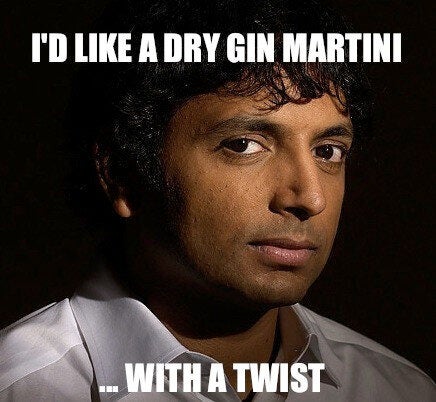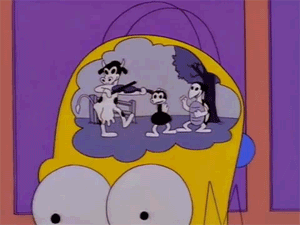
We're living in the golden age of television.
From Breaking Bad to The Sopranos, from Mad Men to House of Cards, critics have been quick to laud the last decade or so as the best in television history. And who am I to argue, despite the fact that I've seen way less of those shows than I'd ever admit? It's hard to deny that in every sense, from storytelling to budget, the quality of television programming has grown by leaps and bounds in the last decade.
Looking at that list above, things seem to be pretty skewed towards a specific type of quality television: gritty stories about gritty men (who are more often than not white) doing gritty things. This is the golden age of television for the antihero, and that's all well and good for some people. Walter White is twice the drug dealer I ever was, and my southern drawl is only marginally better than Kevin Spacey's. Characters like these clearly speak to a large audience, and they clearly draw in accolades and millions of dollars.
But with every successful show about a guy who does what he wants, when he wants, and damn the consequences, it seems like the Golden Age of Television becomes less and less interested in telling any other type of story. The momentous task of fixing the serious diversity problem in TV has been addressedmanytimesbefore, and it's not a conversation that will (or should) end any time soon. But there's another side of television that is making bigger, fresher strides towards diversity and a wider amount of stories (and people telling those stories) in general. Those stories just happen to be told through animation.
Cartoons haven't always aspired to the same emotional and storytelling heights as other art forms. The most popular cartoons of the 1980s all essentially existed to create new customers for their respective toy lines. Transformers, Teenage Mutant Ninja Turtles, My Little Pony; when you break it down, each episode is essentially a glorified toy commercial.
I'm sorry to pop the nostalgia bubble, but go and watch the intro to He-Man and tell me if it holds up to today's artistic and creative standards. Seriously, I'll wait.
So, outside of inserting the phrase "fabulous secret powers" into your daily vocabulary, you've probably realized that '80s cartoons were cheesy, even for the '80s. But the classic cartoons of one generation can still serve to inspire the next one, regardless of objective quality. The 1990s brought a wave of cartoon creators that varied greatly in tone and artistic style, primarily heralded through Nickelodeon's groundbreaking "Nicktoons" lineup, which premiered in 1991 with three shows: Doug, Rugrats, and The Ren & Stimpy Show.
These shows, and the ones that would follow throughout the rest of the decade (Gargoyles, Batman: The Animated Series, Rocko's Modern Life, and finally Spongebob Squarepants) would push the boundaries of what was expected in terms of children's and animated programming. Batman won a total of four Emmys during its 1993-1995 run, for instance. It also had possibly the greatest opening credits of all time: note that it gets its message across without a single letter of text.
It would be wrong for me not to mention The Simpsons, because it was the first cartoon since The Jetsons to successfully label itself as a prime-time sitcom. It was also never mistaken for your average children's cartoon, so it dodged many of the usual assumptions of quality that surround animated shows.
But the rookie animators and prospective animation students of the '90s had an amazing set of shows to aspire to, and a straight decade of genre-defying programming created a generation of animators with the tools and inspiration to craft new kinds of stories. This new age of animation started with Nickelodeon's Avatar: The Last Airbender in 2005.
Over the course of three seasons, Avatar told the story of a nation at war and the spiritual leader (in the body of a 10-year-old boy) that could save the world by mastering the powers of the elements. It effortlessly introduced audiences to aspects of Asian and South Asian spirituality and mythology while also having a fantastic cast of characters, both male and female, of a variety of colours. It was warm, it was funny, and it had some of the best fight scenes in the history of animation. A live-action movie adaptation was all but inevitable, and with source material this strong, how could any director possibly screw it up?

Never mind, then.
Avatar, and its sequel series The Legend Of Korra, opened the door for serialized animated shows that were as satisfying for adults as they were for children. Disney and Pixar nailed the formula on film years prior: the best stories have something to offer everyone. They're not kids' stories or children's shows, they're just good stories and shows. Bryan Konietzko and Dante DiMartino, the creators of the Avatar shows, have said that they created a show that they themselves would want to watch. That sensibility carries over to the other shining stars of modern TV animation.
In 2010, Adventure Time premiered on Cartoon Network to rave reviews and instant popularity -- the first episode drew in 2.5 million viewers. The series, adapted from Pendleton Ward's rejected Nickelodeon pilot of the same name, follows the adventures of Finn the Human and his magical dog Jake, as they quest around the Land of Ooo (which may or may not be a post-apocalyptic version of Earth).
Over the course of five seasons so far, Adventure Time has transformed from a slapstick action show to something far more weird and wonderful. The cast has expanded beyond Finn and Jake to include vampire queens, dictatorial candy princesses, and gender-ambiguous robot children. Episodes have subtly tackled topics like fatherhood, coping with a loved one's mental health, and most recently, how to healthily move on from breakups and unreciprocated romantic feelings. Adventure Time is a colourful chameleon of a show, it's pure joy to watch, and its success has been contagious.
J.G. Quintel, the creator of the popular Cartoon Network low-stakes slacker comedy Regular Show, attended the California Institute of the Arts alongside Ward.
Alex Hirsch, another CalArts alum, is the creator of the delightful "Twin Peaks for kids" show, Gravity Falls, which airs on Disney XD (and is also completely hilarious).
Last fall, Cartoon Network celebrated the premiere of Steven Universe, the first female-run animated program in the history of the network. The show's creator, Rebecca Sugar, was a huge presence in the first few seasons of Adventure Time, and her charm and wit carries over into Universe. The fact that the show is essentially about a young boy who is raised by (and idolizes) the cast of Sailor Moon is just the icing on the cake. (Sugar? Cake? Get it? Whatever.)
All these shows, made by brilliant young millennial-era creators who grew up during the best time in the history of cartoons, are effortless in their diversity and inclusion. For every strong female, every minority character, every situation that plays out in a kind or non-typical fashion, you can picture a Hollywood casting director explaining why that type of diversity isn't what their target demographic is looking for.
The movie adaptation of Avatar -- the show I just mentioned with unprecedented cultural and racial diversity with fantastic roles across multiple genders -- sparked huge amounts of controversy for essentially undoing all of that diversity on the silver screen. And I can't even imagine the last time I saw any movie, ever, that had a male protagonist admire and seek validation from strong female characters like the titular Steven Universe does.
The awesome, empowering, increasingly-popular appeal of the world of animation is that a creator's ideas are limited by location shoots, green screens, or perceived diversity casting. When a talented team of artists and animators work together to create whatever they want, they can literally create whatever (and whoever) they want. And that's pretty damn fantastic, in my book. A quality cartoon will always have my undivided attention.

It's All Geek To Me is a weekly column about geek culture, and how it's secretly all around you, influencing everything you do, forever.
Mike Sholars is a writer, editor, Twitter guy, and knows that a parsec is a measure of distance, not time.